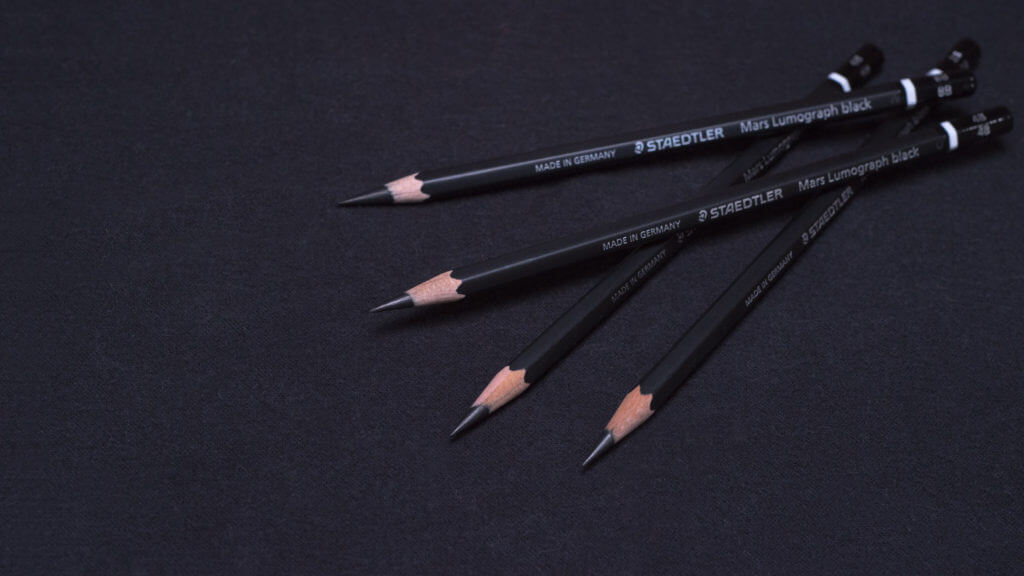What you need to know about oil painting medium, Part I

We get a lot of students asking us about oils… and what are the differences between all those golden bottles that are neatly lined up on the shelves of the art supply stores. I was given only a finite amount of information by my professors who usually had us use what they used for their own work. But rarely did they explain why. A few years ago, with my curiosity piqued, I headed over to the art supply store to do some research of my own.
The store shelves were lined with linseed oils of all types: refined, cold-pressed, bleached, raw, sun-thickened, and stand oil. I saw walnut oil, poppyseed, and safflower oil too. The list continued with driers and siccatives, hard resins, soft resins (or varnishes), synthetic resins, balsams, essential oils, and waxes. If you’re thinking this looks more like a materials list for a chemistry class, you’re not too far off. With so many choices, how do we as artists make sense of them, and how do we know which ones to use?
The answer isn’t always clear, but in most cases the role of oil in painting is fairly simple: to serve as a vehicle and binder for pigments. I like to use watercolor painting as an example. Most of us have used watercolor as kids because being water-soluble, it’s easy to clean up. The vehicle for watercolor painting is water. It helps push the pigment around on the paper, extending it, manipulating it, creating beautiful effects that are characteristic of watercolor paintings. For oil painting, the same principle applies but the vehicle is oil. That’s what “medium” is: it’s the stuff that carries the pigments around on your canvas and holds them in place when it’s dry. Oil painting medium can seem more complex because oils (and other ingredients) come in many different forms, and thus offer more possibilities for painting.
So let’s start with the most common binder of oil paints – linseed oil.
Since the middle of the sixteenth century, linseed oil has been used as a vehicle for paint. The principal advantages of linseed oil are its durability (it forms a tough, flexible skin when dry), its versatility (it can dry thick or thin, transparent or opaque, glossy or matte, slowly or quickly, etc.), and its commercial availability. The disadvantages are the eventual yellowing of the oil and the possible cracking or flaking of the paint film. These can be reduced or removed by the correct handling of the highest quality materials.
Linseed oil is also known as flaxseed oil as it is derived from the dried ripe seeds of the flax plant. I love pointing out how useful the flax plant is for painters. It provides oil for the paint, and fiber for the manufacture of linen which is a common support for oil paintings – two important functions in the creation of artwork served by a single plant. The oil is obtained by pressing, much like olive oil, or in some cases, extracted by the use of solvents. Linseed is one of a category of oils called “drying oils” due to its high concentration of a-linolenic acid which reacts with oxygen and polymerizes when exposed to the air. The tough film that results is what makes linseed oil so useful for painting – this dry oil can last for centuries.
In the coming weeks I’ll write further posts about oil and painting medium, and do my best to take some of the mystery out of the more common ingredients by discussing what they are and how we can best use them.







Am I the only one in the woIrld who WANTS his paint to dry more slowly?! I’ve been working on big canvases, trying to create large landscapes which border on fantasy art. I will begin applying paint to several areas, and by the time I get around to begin blending the paint has already dried! I then am forced to try to repaint areas to blend them, which means I’m painting and repainting over and over.
My ideal would be a paint which takes about a week to set up.
For those who can only get flaxseed oil, you can turn it into linseed oil by purifying it yourself and letting it stand in the sun for some weeks, depending on where you live, You can find the directions here, at A Pigment of Your Imagination: Part 1– https://marshagilliam.com/2013/05/ Part 2– https://marshagilliam.com/2013/06/ Part 3– https://marshagilliam.com/2013/07/ Hope it helps you 🙂 Marsha
Dear Vitruvian,
I am located in a country called Trinidad and Tobago, which is in the West Indies. It is impossible to get many of the standard mediums for oil painting.
The materials that are available where I am are extremely limited but here they are
1. Easy to get Coconut oil, clove oil, rosemary oil(pharmacy), lavender oil(pharmacy), baby oil, , turpentine (hardware), rapeseed oil(supermarket), linseed oil (hardware type), brush soap, , dove soap bars, ivory soap bars, corn oil(supermarket), soyabean oil(supermarket),
2. Difficult to get and not available in stores have been rejected upon importation : walnut oil, linseed oil (artist quality), safflower oil, poppy oil
3. Impossible to get: Everything else because solvent are considered hazardous materials and importation is difficult.
I understand baby oil which is essentially mineral oil is not a good option for a medium, I understand turpentine is considered not so great as well, but these may be used as a cleaning solvent. Can you state a process to use for the above mentioned materials to clean brushes and also a possible medium based on the
If you can assist then great and thank you and if not still thanks for taking the time.
Again I am really disappointed in not getting your product. I know it is no fault of your own. But right now I am just stuck not painting. Can I use lavender oil and /or rosemary oil from the pharmacy?
Regards
Hi Romel,
Coconut, rosemary, baby, rapeseed, corn, olive, and soybean oil CANNOT be used in oil painting. The reason: these are nondrying oils.
Linseed oil, Walnut, safflower, and poppy oil ARE drying oils. These are what you can use in oil painting. Linseed, in particular is what you can focus on. Now…. the linseed oil from the hardware store is not going to be as highly refined (if at all) as artists-quality linseed oil… and oftentimes has weird additives in it that could be very harmful to an oil painting.
Turpentine is fine for cleaning brushes but should not be the only thing you use… consider if you were to wash your hair with turpentine. 🙂 After cleaning out as much paint as you can with the turp, then use Murphy’s Oil soap to further clean out your brushes… you’ll see extra paint and turp residue come out in the soap, and rinse your brushes out completely. The nice thing about Murphy’s is that it also conditions your brushes as it cleans them. Dish soap is also ok but tends to be a little harsher on your brush’s lifespan.
If you’re not able to get any drying oils to use with your painting process… then don’t worry about it. Just don’t use any oil. There is oil in your paint, remember… and although you may not be able to do any glazing or optical effects with an available medium, it’s actually better for your painting long-term that you’re not adding any more oil to the painting. Oil is THE most destructive element in an oil painting, unfortunately…. but in your case, not having it is not such a bad thing.
From a search online, I found that rosemary essential oil is not a non-drying oil and can be used in painting – it is in fact sold by art companies, as well as Lavender Spike Oil (made from the spikes of the plant, not the flowers). While the link does specify essential oils, I personally don’t know the difference between essential oils at the pharmacy and those bought from an art store. I stumbled across this because I was looking for different solvents to use instead of turpentine or mineral spirits. You could always get a small bottle of the rosemary essential oil and test it with a small piece to confirm it dries. From the article, essential oils are formed through distillation instead of pressing (like olive oil, coconut oil, etc..). I think I may try it myself!
https://www.jerrysartarama.com/images/PDFs/Artists-Guide-to-Oil-Painting-Solvents.pdf
Hi,
Please help me am in rwanda so i cant get linseed around,so which other medium i can use instead of linseed ,(can i use olive oil?
Hi Fabrice,
I don’t recommend olive oil. Linseed oil is common, but you can also use walnut, poppy, or safflower oils for painting.
Thank you for doing this – very essential in understanding the daunting task of getting the right stuff.
So in a pinch could I use that Flax Oil in my refrigerator?
Hi Julie, you could use it. The difference between the artists’ grade and the edible variety is two things. Artists’ grade linseed oil is typically derived by the use of solvents, making it easier to obtain and more economical. Edible flaxseed oil is cold pressed (like extra virgin olive oil). This fresh, unprocessed oil contains a higher level of omega-3 fatty acids. Some flax growers also produce breeds of plants that will possess these “nutritional” strengths.
Because the edible variety is so fresh and fatty, oxidation will make it go rancid, very much like walnut oil. With the artists’ grade, antioxidants may be added to the oil to prevent it from spoiling (or rancidification) and increasing the oil’s shelf life. There is an artists’ grade linseed oil that is specified as cold pressed. It is of high quality and generally a little more expensive, and you usually see it in smaller bottles for just that reason…. shelf life.
Would it be safe to use artists’ grade in cooking? I wouldn’t. It’s difficult to know the “trade secrets” of the manufacturing process of linseed oil (unless it’s the higher quality cold pressed variety) and what kinds of solvents companies use. Best to keep things separate as much as possible. I say this and I still keep a beverage on my taboret that I inevitably drop my paintbrush into on occasion instead of the turp jar. 🙂